
Photo Editor Darkroom Celebrates 9th Birthday With New Features
Mac, iPad, and iPhone photo and video editing app Darkroom is celebrating its ninth birthday this week, and its developers have introduced new features to mark the occasion.

Mac, iPad, and iPhone photo and video editing app Darkroom is celebrating its ninth birthday this week, and its developers have introduced new features to mark the occasion.

It was once common for professional and advanced hobbyist photographers to have small but capable darkrooms in their homes. Often tucked away discreetly in what would otherwise be unused spaces in basements and attics. Serious shooters would process their own film, craft their own prints, and store all the chemistry and idiosyncratic accouterment that one needs to control their own analog adventure.

I've wanted to experiment with the idea of imbuing a print with more than just standard chemistry, and I especially like the idea of adding layers of experience to what is ordinarily solely a visual medium.

Leica's FOTOS app, the company's free and universal smartphone app that works alongside Leica cameras, is now integrated with the popular macOS photo and video editing app Darkroom.

Just about every industry has been touched by some form of supply chain issue in the past few years and photography has been no exception. But black and white film photographers might be taking the brunt of them soon.

The Instant Box Camera is a portable camera and darkroom all in one. It features a 110mm f/4.5 lens attached to a box that allows photographers to capture a photo and process the film all in one mobile photo studio.

The film photography revival is going strong but these pictures don’t just magically appear out of thin air! Eventually you need to develop your film so I put together this step-by-step guide to process black and white negatives at home. It’s easier than you might think!
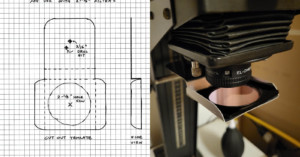
Have you ever had a repeated inconvenience that finally makes you say to yourself, "Okay, I’m done with this garbage"? Well, that’s the exact feeling I had with using contrast filters on my enlarger. Anytime I wanted to use a contrast filter, I needed to use tape to hold it in place while I was printing.

Pinsta Instant Camera is a new pinhole camera that can shoot directly onto positive 4x5 inch photographic paper where it develops internally, eliminating the need for a darkroom.

Ilford Photo has announced a new Pop-Up Darkroom that gives film photographers the opportunity to develop their prints on-the-go or in any indoor space without needing to convert it.

Just as there is hardly a one-size-fits-all best DSLR or best mirrorless camera for any given user, there is certainly not any single best application for everyone. Users’ needs and preferences vary wildly, especially considering the extensive capabilities of today’s iPhones.

A photographer has documented the disappearing American West using a unique alternative photographic process called Mordançage which gives the finished images a surreal and ethereal look.

Photographer Eneko Jorge Gomez was browsing a thrift store near his home in Spain when he came across an old camera that he realized was still loaded with film. After developing the roll, he used clues in the photos to determine that he believes the images are at least a decade old and taken in Turkey.

Over the past year, it seems the whole world has been on hold due to the rampages of COVID-19. In the Facebook groups I’m in, many users were seeing shortages in analog photography supplies. Some online stores stopped shipping Rodinal (a caustic liquid) and other products were just nowhere to be found.
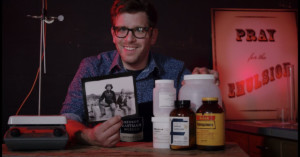
If you're a film photographer who likes to go the do-it-yourself rather than store-bought route, here's a fun little tutorial for you. In this 3-minute Darkroom Magic episode by the George Eastman Museum, Historic Process Specialist Nick Brandreth shows how you can make your own photo paper developer at home from scratch.

Yesterday, the developer beta for iOS 14.3 – which contains the upcoming ProRAW photo feature – became available. Though the exact date of the consumer beta or final release of the software has yet to be announced, we now know some facts about how ProRAW will work.

Over the past seven months, Ilford has been publishing a set of helpful "Darkroom Guides" to the How To playlist on the company YouTube channel. The series was created to help film photographers take their "next steps in your black and white darkroom printing journey." If that describes you, then this is one you'll want to bookmark.

Earlier this week, Apple announced the winners of its annual 'Design Awards,' and as usual, one of the honorees was a photo editing app. This year, that app was Darkroom, and while the photo and video editor for iOS is impressive in its own right, the most interesting thing about Darkroom might be the story behind how it came to be.

There are various mediums and techniques you can use to create prints of your photos, but have you considered using algae? That's what photographer Russell Marx has been experimenting with, and the result is impressive.

Yesterday, UK-based film manufacturer Ilford released an official company statement regarding its handling of the novel coronavirus pandemic. And while the statement covered all of the important updates, Ilford also took the opportunity to strike a cheeky, lighthearted note.

Photographer Karl Taylor recently put together a quick tutorial video that shows you how to use ND filters to "burn" a long-exposure in-camera while you're taking the shot. It's a neat trick, and a good solution for those times when a graduated filter won't work.
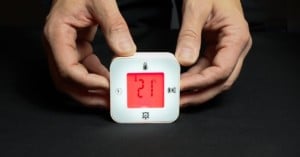
If you develop your own film or wet plates, photographer Markus Hofstaetter has a great tip for you. With just a tiny little DIY tweak, you can turn a $5 all-in-one IKEA gadget into the perfect all-in-one Darkroom timer, thermometer and clock.

During this year's STORY conference in Nashville, TN, photographer Blake Wylie did something really cool. He turned a massive symphony hall into what might be the world's largest darkroom so that he could capture and develop a tintype portrait on-stage, in front of an audience of 1,400 people.

A young fan of the popular Netflix show Stranger Things earned a bit of Internet fame (or is it infamy?) this weekend when they asked a question about that strange "red room" in the show where Jonathan goes "to 'refine' his photos or something." In other words: a darkroom.

Legendary photographer Edward Weston was one of the most influential photographers in American history, and in this short video, we get to go back in time, visit his home, and watch him process one of his negatives from start to finish.

Michaël Tirat, a wet plate photographer based in Bordeaux, France, has created something pretty special. In an attempt to make his photography services more portable, he's created a mobile darkroom on a tricycle that enables him to capture wet plates photography all over the city.

For three weeks earlier this year, if you visited Northernhay Gardens in Exeter, UK, you would have found one of the largest and most unusual cameras in the world. It's called the Container Camera, and the large-format-camera-and-darkroom-in-a-shipping-container was created by photographer and educator Brendan Barry.

In this article, I'm going to show you how you can make a DIY darkroom safelight using very simple products from IKEA. Yes, IKEA the store that sells furniture that's almost made of cardboard.

I recently converted my friend's Durst Laborator 1200 enlarger to use LED lights. In this article I'll share how I did it.

CineStill has launched new powdered versions of its color and black-and-white film development kits. The new "just add water" kits help photographers save both money and space.

After launching its affordable 4x5 large format camera in 2014, Intrepid is back with a new product called the Intrepid Enlarger. It's an attachment that turns any 4x5 camera into a darkroom enlarger and negative digitizer.

Here's a 16.5-minute video by OWL BOT in which photographer Omar Kenji demonstrates how you can develop C-41 color film in your own bathroom instead of passing it to a photo lab.

Ilford recently released a popular 8-minute video on how to process black-and-white film yourself, and now the film company is back again with another helpful crash course on how to make a black-and-white print in a darkroom. If you've never worked in a darkroom before, this intro is a great way to see what it's all about.

If you've never tried your hand at black-and-white film photography before but would like to learn the basics of developing your own film at home, here's a great 8-minute primer that'll get you up to speed.
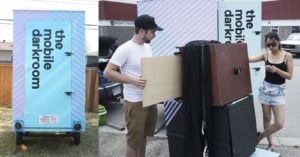
In December 2015, Shane Arsenault and I had started talking about a joint photography project with the purpose of using his 16”x20” Bellows Camera on a larger scale, which would give us the freedom to work outside a conventional studio space.

An important part of developing your own editing style is the way that you color grade your images. Photographer Sean Tucker explains his approach in this 15-minute video, showing how he uses edits his photos while adhering to a consistent color palette.

Want to see where and how one of the legends of photography processed their photos? Here's a 14-minute video that takes us on a tour of Edward Weston's darkroom (note: there's brief nudity).
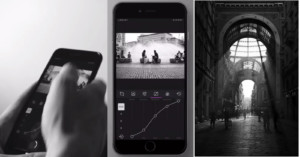
Here's a 15-minute video by photographer Sean Tucker in which he runs through an effective technique for processing black and white images, with a focus on mobile. Tucker demonstrates using curves and HSL sliders to achieve a dramatic look for his images that end up on his Instagram.
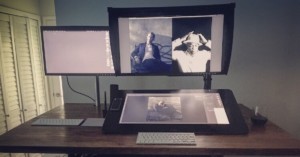
It’s not news that photography has changed dramatically over the past century. What was once an arduous process involving chemicals and clothespins has been completely digitalized, and in many cases automated. Anyone with a smartphone can call themselves a photographer; but does that mean the artistry has fizzled? Not in the least.

When photographer Ben Money got back in to film photography a couple of years ago, he decided to set up a dedicated darkroom station for himself at home. But because he didn't have a permanent room to use, he ended up create a self-contained rolling darkroom that takes up just 5-square-feet of space in his garage when collapsed.